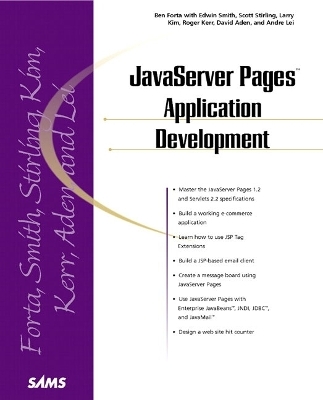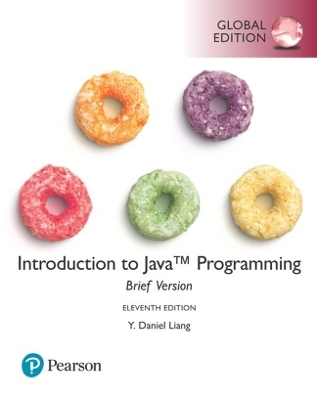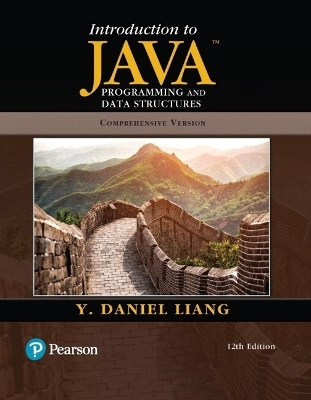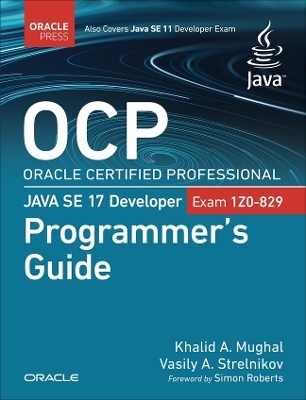
JavaServer Pages Application Development
Sams Publishing
978-0-672-31939-6 (ISBN)
- Titel ist leider vergriffen;
keine Neuauflage - Artikel merken
Developing Java Server Pages teaches JSP programming, with emphasis on techniques that allow programmers to get the job done quickly and efficiently. This book shows you how JSP, the next chapter in the evolution of Java as a server side development language, is used and how it can be used. Workarounds in advice and code are explored to provide practical and realistic solutions to problems. Other technologies are also introduced, including Servlets, the Java language, JDBC, and beans. Using extensive examples, and a hands-on approach, authors Paul Colton, Andre Lei, and Scott Stirling present the most important topics for web developers, including security, database interaction, custom tags and scalability. All examples are based on hard earned, real-world experience.
Introduction.
Who Should Use This Book. How to Use This Book.
What You'll Learn.
1. Understanding JSP.
Internet and World Wide Web Basics.
The Internet. The World Wide Web. Web Browsers and Web Servers. Application Servers. Components, Containers, and Connectors.
The Java Advantage.
Understanding Java. The Java Virtual Machine. Java Terminology.
JSP and Servlets. Putting Java to Work.
2. Creating a JSP Page.
Getting Under the Hood.
Hello World. Getting the Request. Translating the Page.
Viewing the Source.
JRun. Resin. The Jakarta Project.
Understanding Access Models.
Model. Model.
Understanding the Model-View-Controller (MVC) Pattern.
A Quick History Lesson on MVC. WYSIWYG Example. Web Application Example.
Directives.
The page Directive. The include Directive. The taglib Directive.
Commenting Your Code.
Source Comments. Hidden Comments.
Coding Tips.
Use Cascading Style Sheets (CSS). Keep JavaScript and JSP Uncluttered. Use XHTML.
3. Using Scripting Elements.
Using Expressions.
Using Strings in Expressions. Using Methods and Constructors in Expressions.
Using Declarations.
Java's Primitive Data Types. Java's Operators. Creating a Hit Counter in JSP. Creating a Table Using a JSP Declaration.
Using Scriptlets.
4. Using Available Objects.
Understanding Objects. Understanding JSP's Implicit Objects.
Understanding Object Instantiation. Relating JSP to Servlets, CGI, and HTTP. Understanding the Java Reflection API. Understanding Inheritance. Using the exception Object. Viewing the Class Hierarchies of All the Implicit Objects. Understanding Encapsulation. Using Reflection to Introspect the Implicit Objects. Understanding Scope. Understanding the Scope of the JSP Implicit Objects.
5. Using Beans.
Understanding JavaBeans.
Accessor/Mutator Methods and the No-Argument Constructor. Writing Your Own JavaBeans. Using JSP Standard Actions and JavaBeans.
Using JavaBeans in JSP.
Creating a Hit Counter in JSP. Creating a Quote Randomizer in JSP. Creating a Message Board Web Application in JSP.
Wrapping Up.
6. Connecting Pages.
Understanding URLs.
Constructing a URL. Scheme: request.getScheme(). Server Name: request.getServerName(). Port Number: request.getServerPort(). Script Name: request.getRequestURI(). Filename and Extension: request.getServletPath(). Query String: request.getQueryString(). HTML Anchor: Client-Side Functionality.
Using the GET Method. Using Query Strings.
Generating Query Strings. Processing Query Strings. Escaping URLs.
Linking JSP to HTML, JSP, and Servlets with .
Forwarding to HTML and JSP. Forwarding to Servlets.
7. Working with Forms.
Using Form Controls
Tag. Tag. Tag.
| Erscheint lt. Verlag | 23.11.2000 |
|---|---|
| Verlagsort | Indianapolis |
| Sprache | englisch |
| Maße | 185 x 230 mm |
| Gewicht | 705 g |
| Themenwelt | Informatik ► Programmiersprachen / -werkzeuge ► Java |
| Mathematik / Informatik ► Informatik ► Web / Internet | |
| ISBN-10 | 0-672-31939-X / 067231939X |
| ISBN-13 | 978-0-672-31939-6 / 9780672319396 |
| Zustand | Neuware |
| Haben Sie eine Frage zum Produkt? |
aus dem Bereich


